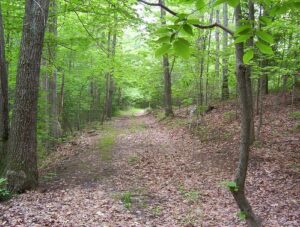Environment Ministry to regulate ecotourism along Palomino Dam route – Dominican Today

Report on the Sustainable Ecotourism Initiative for the Palomino Dam, Dominican Republic
1.0 Introduction: A Multi-Stakeholder Approach to Sustainable Development
A multi-stakeholder working group has been established in the Dominican Republic to regulate ecotourism activities along the Palomino Dam and Río Blanco Canyon route. This initiative represents a strategic effort to align local tourism development with the United Nations Sustainable Development Goals (SDGs). The primary objective is to create a sustainable management framework for a route that has experienced significant, unregulated growth in domestic tourism, ensuring its long-term viability and contribution to national development targets.
2.0 Collaborative Framework: Partnership for the Goals (SDG 17)
The formation of the working group exemplifies a robust partnership model essential for achieving the SDGs. It brings together diverse governmental and private sector entities to ensure a holistic approach to resource management. Key stakeholders include:
- Ministry of Environment and Natural Resources
- Ministry of Tourism
- Dominican Hydroelectric Generation Company
- National Institute of Hydraulic Resources
- Dominican Council of Fisheries and Aquaculture
- Private Travel Operators and Ecotourism Guides
3.0 Core Objectives and SDG Integration
The initiative is designed to address several interconnected development goals through a series of targeted actions. The primary objectives are:
- Protection of Essential Services: To safeguard the dam’s principal functions, which are critical for national infrastructure. This directly supports:
- SDG 6 (Clean Water and Sanitation): By preserving the reservoir as a primary source of water supply for the population.
- SDG 7 (Affordable and Clean Energy): By ensuring the uninterrupted operation of the hydroelectric facility.
- Conservation of Ecosystems: To implement regulations that protect the natural environment, as most dams are located within protected areas. This action aligns with:
- SDG 15 (Life on Land): By conserving terrestrial and freshwater ecosystems and their biodiversity.
- SDG 14 (Life Below Water): By managing human impact on aquatic environments, in coordination with the Council of Fisheries and Aquaculture.
- Promotion of Sustainable Economic Growth: To develop a regulated ecotourism model that provides economic benefits to local communities while ensuring environmental integrity. This contributes to:
- SDG 8 (Decent Work and Economic Growth): By creating sustainable livelihoods and improving economic opportunities through responsible tourism.
- SDG 12 (Responsible Consumption and Production): By designing a low-density, environmentally responsible tourism package that promotes sustainable consumption patterns.
4.0 Action Plan and Implementation
To facilitate a comprehensive assessment, the route will be temporarily closed for one month, commencing August 18, 2025. During this period, the working group will conduct an on-site evaluation of environmental, social, safety, and economic factors. The goal is to develop a formal ecotourism product that balances community benefits with the preservation of natural capital, thereby creating a replicable model for sustainable tourism management in other protected areas across the country.
SDGs Addressed in the Article
-
SDG 6: Clean Water and Sanitation
The article highlights the importance of preserving reservoirs for their primary functions, including water supply. The creation of a working group to regulate activities around the Palomino Dam aims to protect these water resources, which directly aligns with ensuring the availability and sustainable management of water.
-
SDG 7: Affordable and Clean Energy
The Dominican Hydroelectric Generation Company is part of the working group, and the article explicitly mentions that one of the primary purposes of the dam is “electricity generation.” Regulating ecotourism ensures that this function is not compromised, thus supporting the infrastructure for clean energy.
-
SDG 8: Decent Work and Economic Growth
The initiative focuses on developing a sustainable ecotourism model that enhances “economic opportunities for local communities” and supports “local development through tourism.” This directly relates to promoting sustained, inclusive, and sustainable economic growth and productive employment.
-
SDG 15: Life on Land
The article states that most dams are located within “protected areas.” The regulation aims to ensure the “sustainability” of recreational activities to preserve the natural environment. This connects to protecting, restoring, and promoting the sustainable use of terrestrial ecosystems.
-
SDG 17: Partnerships for the Goals
The entire initiative is built on a multi-stakeholder partnership. The article lists a “working group” composed of the Ministry of Environment, Ministry of Tourism, a hydroelectric company, a hydraulic resources institute, a fisheries council, travel operators, and ecotourism guides. This collaboration is a clear example of a partnership to achieve sustainable development goals.
Specific SDG Targets Identified
-
Target 6.5: By 2030, implement integrated water resources management at all levels, including through transboundary cooperation as appropriate.
The formation of a working group with multiple government ministries (Environment, Tourism), public companies (Hydroelectric Generation), and institutes (Hydraulic Resources) to manage the use of the Palomino Dam area is a direct implementation of integrated water resources management at a national level.
-
Target 8.9: By 2030, devise and implement policies to promote sustainable tourism that creates jobs and promotes local culture and products.
The article’s central theme is the creation of regulations and a “safe and environmentally responsible ecotourism package” for the Palomino Dam route. The stated goal is to balance tourism with “community benefits” and “economic opportunities for local communities,” which perfectly matches this target.
-
Target 15.1: By 2020, ensure the conservation, restoration and sustainable use of terrestrial and inland freshwater ecosystems and their services, in particular forests, wetlands, mountains and drylands, in line with obligations under international agreements.
The Ministry of Environment is drafting regulations to ensure recreational activities are “sustainable” and that the dam, which lies within a protected area, is preserved. This effort directly addresses the sustainable use of an inland freshwater ecosystem.
-
Target 17.17: Encourage and promote effective public, public-private and civil society partnerships, building on the experience and resourcing strategies of partnerships.
The working group described in the article is a textbook example of this target. It is a public-private-civil society partnership involving government ministries, a public company, and private sector/civil society actors like “travel operators, and ecotourism guides.”
Indicators Mentioned or Implied
-
Development of a regulatory framework for ecotourism.
The article explicitly states that the Ministry is “drafting regulations to ensure recreational activities at dams remain sustainable.” The existence of these regulations serves as a direct indicator of progress.
-
Creation of a sustainable ecotourism package.
A key outcome mentioned is the plan to “develop a safe and environmentally responsible ecotourism package.” This package is a tangible indicator of implementing sustainable tourism policies (Target 8.9).
-
Assessment of environmental, social, and economic factors.
The working group will “evaluate safety, environmental, social, and economic factors before making final decisions.” This assessment process itself is an indicator of a comprehensive approach to sustainable management (Targets 6.5 and 15.1).
-
Establishment of a multi-stakeholder partnership.
The formation of the “working group” itself, comprising diverse entities from the public, private, and civil society sectors, is a clear indicator of achieving Target 17.17.
SDGs, Targets, and Indicators Analysis
| SDGs | Targets | Indicators |
|---|---|---|
| SDG 6: Clean Water and Sanitation | 6.5: Implement integrated water resources management. | Assessment of environmental factors to preserve reservoirs for water supply. |
| SDG 7: Affordable and Clean Energy | (Implicitly related) Protecting infrastructure for renewable energy. | Regulation of activities to ensure the dam’s primary purpose of electricity generation is not compromised. |
| SDG 8: Decent Work and Economic Growth | 8.9: Devise and implement policies to promote sustainable tourism. | Development of a “safe and environmentally responsible ecotourism package” that provides “economic opportunities for local communities.” |
| SDG 15: Life on Land | 15.1: Ensure the conservation and sustainable use of terrestrial and inland freshwater ecosystems. | Drafting regulations to ensure recreational activities in protected areas are sustainable. |
| SDG 17: Partnerships for the Goals | 17.17: Encourage and promote effective public, public-private and civil society partnerships. | The formation and operation of the “working group” composed of government ministries, a public company, and private tour operators/guides. |
Source: dominicantoday.com

What is Your Reaction?
 Like
1
Like
1
 Dislike
1
Dislike
1
 Love
1
Love
1
 Funny
0
Funny
0
 Angry
0
Angry
0
 Sad
0
Sad
0
 Wow
0
Wow
0










/campaigns/16-days-of-activism-against-gender-based-violence/pr-web-banner.tmb-1200v.jpg?sfvrsn=8cc7b98e_1#)



































































